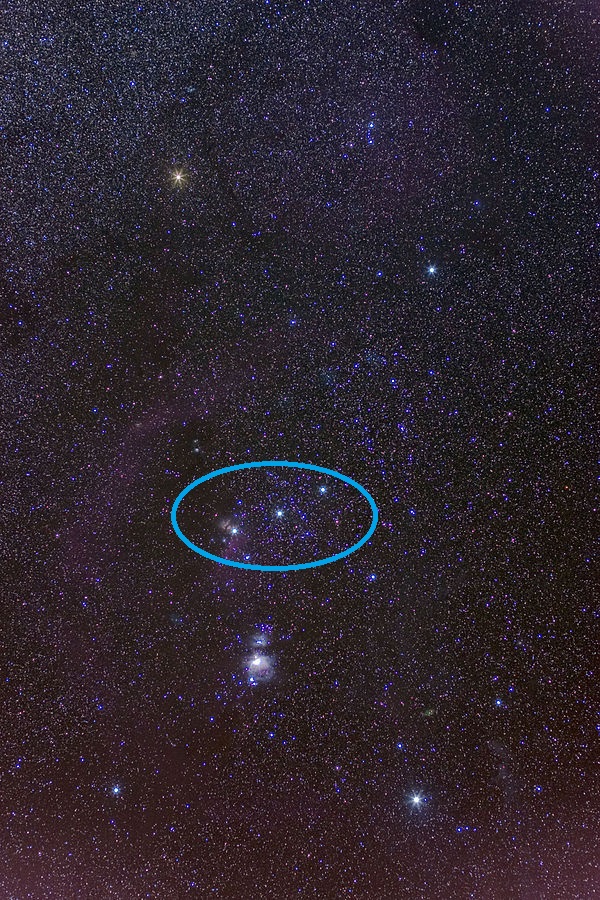Reasons to Measure Distances

Credit: Mouser,
belt highlighted by The Schools' Observatory
Measuring distances in astronomy is difficult but crucial.
By knowing the distance to an object we can learn about its true size. We can measure the size an object takes up on sky. To work out its actual size we then need to know how far away it is. The further away an object is the smaller it looks. An interesting example of this is that we can see planets in the night sky. They often look like stars, but slightly bigger and brighter. Planets are much smaller than stars, but they are also much closer, so they appear bigger.
Knowing the distance to an object can also tell us about the energy it produces. We see most of this energy as light, and can measure it using the luminosity. The further away something is, the fainter it seems to be. This makes it look less energetic. If we know how far away it is, we can work out how much energy it is actually generating. We can then compare objects like stars. These can often look the same brightness but are actually be creating different amounts of energy, and light. This helps us to understand the physics of what makes them work.
We need to know how far away objects are to look at differences between them. Two objects can look different but be very similar, with one further away than the other. This can make them difficult to study.
The constellation of Orion has 3 stars in a row making up "Orion's Belt". They look to be about the same brightness, but the middle one is actually twice the distance of the others. It is just much brighter.
The distances used in astronomy are enormous. So big that it becomes impractical to use units like kilometres and miles to measure things. Other units are used instead, like astronomical units, light years and parsecs.
Measuring how far away objects are is also hard. Astronomers have created a range of ways to measure the distance to objects in space. Each one takes us a step further away, but is also less accurate. Parallax is one of the methods used. It uses the motion of the Earth around the Sun to see how things move against the background of stars. Another way is to use standard candles. These are objects which have the same brightness - like type Ia supernovae. Knowing how bright they should be lets us estimate how far away they are by looking at the change in brightness.
Getting used to handling angles, and measuring distance, in astronomy is much easier in practise. Why not try out our Barnard's Star workshop which uses parallax to calculate the distance to this star.

